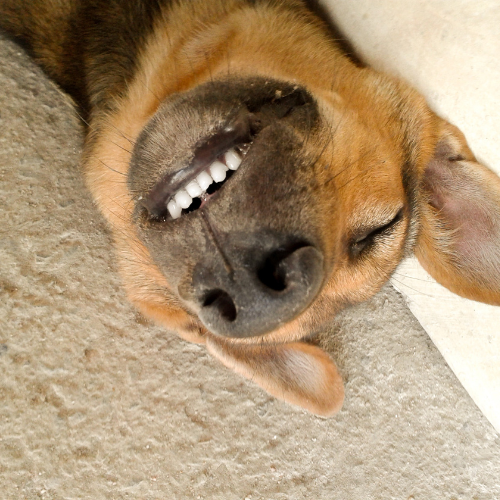February is National Pet Dental Health month. Dental disease is by far the most common health problem that dogs and cats develop. By the age of three, 80% of dogs and 70% of cats have some degree of active dental disease. It is also the most under diagnosed disease of companion animals because our pets are unable to communicate their discomfort to us and because pets continue to eat no matter how much disease and pain they are experiencing due to their survival instinct.
The number one thing pet owners can do at home to prevent dental disease is brushing their pet’s teeth to remove the plaque. Plaque is a colorless film that is constantly forming on both human and animal teeth. If it is not removed by brushing within 24 hours, it becomes tartar/calculus that cannot be removed by brushing. In pets, the tartar builds up and begins to accumulate at the gum line. This is how periodontal disease begins. Periodontal disease is inflammation/infection that develops around the tissues of teeth. As periodontal disease progresses, pet owners usually become aware that there is a problem in the mouth because the breath begins to smell badly and an oral examination by a veterinarian will likely result in recommendation of a professional cleaning.
Daily brushing is recommended with three times weekly being the minimum amount recommended. Brushing should be started as soon as possible in the pet’s life. Even though the baby teeth are going to be replaced by adult teeth, daily brushing helps acclimate the pet to the experience. There are two kinds of brushes-finger brushes and the longer brush which resembles a human toothbrush. The finger brush is good in the beginning, but transitioning to the longer brush will most likely be necessary as the pet grows. DO NOT use human toothpaste as they may contain fluoride in toxic doses, xylitol or a chemical called Sodium Lauryl Sulfate (SLS), which is what makes human toothpaste foam. Even small doses can cause gastrointestinal issues for your pet. There are special toothpastes made for pets that are safe and also tastes like chicken and other flavors pets prefer.
If owners are unable to brush their pet’s teeth, there are a variety of other products that can be helpful. The Veterinary Oral Health Council (VOHC) evaluates products and their seal can be found on products that have been tested and proven to effective. Chew toys, treats, bones, water additives and even food are available to help keep pet’s teeth healthy.
Besides better breath, proper oral hygiene in pets helps increase their lifespans. The mouth is a constant source of bacteria that can damage organs such as the heart and kidneys. Research has shown that professional dental cleaning can actually improve kidney function in cats that have been diagnosed with kidney disease/failure. During a professional dental cleaning, pets are sedated, IV catheters placed and the pet is intubated with an endotracheal tube. In addition to providing gas anesthesia to the pet, the tube protects the trachea from any debris that would otherwise go into the lungs during a dental cleaning. From this point, a veterinary cleaning is much like a human dental cleaning. The teeth are first examined and charted to determine the degree of mobility, gum recession and loss of bone around the teeth. Full mouth dental radiographs are taken to assess the health of the gums and bone beneath the gum line, which is where the majority of dental disease takes place. If there are any teeth that need to be extracted, local blocks are administered and the affected teeth are removed. Finally the teeth are cleaned and polished and the pet wakes up from anesthesia with a healthy mouth free from periodontal disease!





